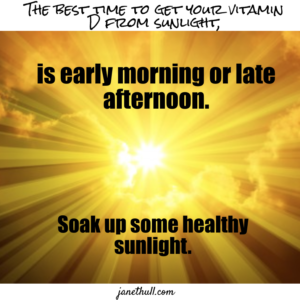
Over the past few decades, we have been told that getting too much sun is dangerous for our skin. However contrary to this, getting some sun every day is actually very healthy for you.
Yes, you need to be careful when getting too much sun, and there are safer times when to absorb the sunlight than other times.
The sun is up there for a reason, and it does provide beneficial vitamins and hormones for all plants and animals.
Some Benefits
Vitamin D is the most commonly known health benefit from sunlight. Vitamin D plays a big role in immunity and bone health. Today, vitamin D is a key supplement to help prevent The Rona.
Sunlight releases serotonin, it boosts your bone health, and actually helps treat some skin conditions. According to the World Health Organization, UV radiation exposure can help treat skin issues like psoriasis, acne, jaundice, and eczema.
Along with the production of vitamin D, sunlight supports your bone health, lowers your blood pressure, strengthens your immune system, which helps prevent disease, and promotes good mental health.
So, as you slather on the sunscreen, you may actually be preventing many health benefits awaiting you.
You’ll stay more active if you get the right amount of sunshine at the right time of day – it can make you feel happier and healthier.
When To Get Safe Sunlight

As a quick review on the sun’s rays, there are two different types of UV rays: ultraviolet A (UVA) and ultraviolet B (UVB).
UVB are the only rays that cause sunburn, and UVA contribute to the risk of skin cancer because UVA rays sink deeper into the skin.
The best time to get vitamin D from sunlight is at noon when the sun is at its highest point. but this is when UVB is the most intense. So at this time, spend less time in the sun to make sufficient vitamin D.
Morning light is a less intense time to capture vitamin D, so it takes a bit longer to absorb a daily dose – 20 to 30 minutes between 7:00 A.M. and 9:00 A.M. are safe times to be outdoors.
Afternoon sun tends to be stronger than morning sun, so limit afternoon hours of sun exposure, and make sure to wear a hat or have access to some shade if you are outside longer than 30 minutes.
Remember that the sun’s burning rays are the strongest between 10 a.m. and 2 p.m.

When To Use Sunscreen
It’s important to note that I am not saying to never use sunscreen. If you’re going to be outside for more than 15 minutes in the middle of the day or if no shade is available, you should protect your skin, especially your face.
Applying a sunscreen of at least SPF 15 is the best choice.
The sun is essential for the health of all plants and animals. The health benefits of sunlight are wonderful, but remain aware of limited exposure times, avoid getting sunburned, and don’t forget the differences at certain times of day.
_____________________________
If you want to learn more about health and disease prevention, contact me at janethull.com. Remember that you are never alone when you are looking for good health!
Gain access to all of my online programs, ongoing support, monthly Q&A, and more. I look forward to supporting you on your journey to alternative health and wellness.
_____________
Disclaimer: This article is for informational purposes only, and is educational in nature. The FDA may not have evaluated some of the statements. This article is not intended to diagnose, treat, cure, or prevent any disease. Please discuss with your own, qualified health care provider before adding supplements or making any changes to your dietary program.
Before taking vitamins, consult your doctor; pre-existing medical conditions or medications you are taking can affect how your body responds to multivitamins.
You have our permission to reprint this article if you attribute us with a live back-link to this article and the youtube links. https://janethull.com/